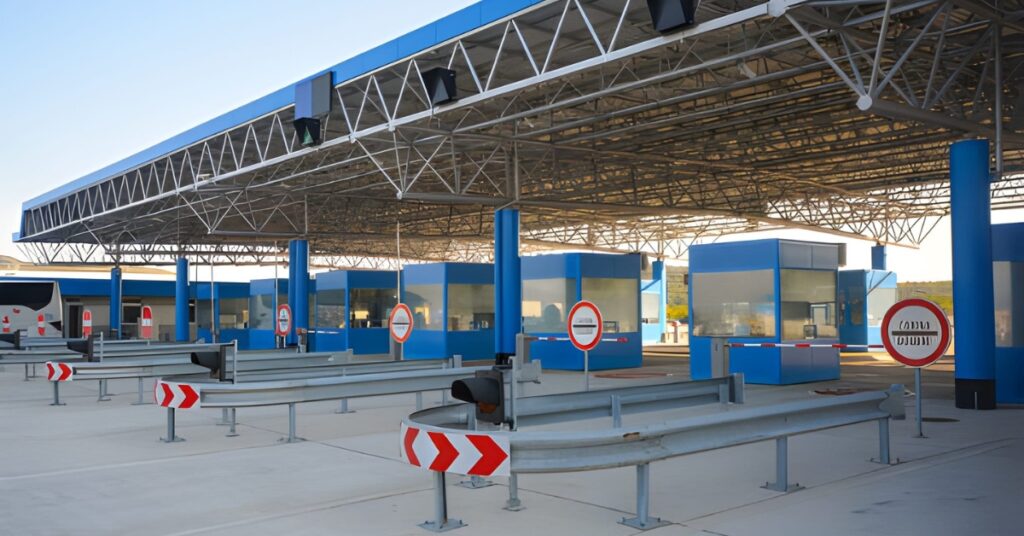Frontex, Italy Pilot EU Asylum Screening Before 2026 Pact
Nov 3, 2025
Category: Border and Security EU Italy News

Frontex and Italian authorities have tested a new EU-wide asylum screening system on the island of Lampedusa, aiming to prepare for the full rollout of the EU Pact on Migration and Asylum in 2026.
The two-week pilot was designed to speed up migrant processing and strengthen border checks across Europe.
Testing Europe’s new border playbook
The two-week pilot, held from October 13 to 24 on the island of Lampedusa, brought together Frontex, Europol, the EU Agency for Asylum (EUAA), and Italian border authorities.
They tested new digital tools and workflows under the EU Screening Regulation, part of the wider EU Pact on Migration and Asylum, which will take effect in June 2026.
The trial focused on handling 240 newly arrived migrants, assessing identity, health, and security checks under real-world conditions. The goal was to make future procedures faster, more consistent, and more coordinated across the European Union.
Faster checks, stronger coordination
Teams worked in shifts to process each arrival through biometric registration, vulnerability screening, and security assessments.
Each person was informed of their rights, asylum procedures, and support options before results were entered into a digital “Screening Toolbox,” a system designed to standardize how EU countries screen people at their borders.
“This pilot shows how European cooperation translates into tangible results,” said Hans Leijtens, Executive Director of Frontex. “By preparing together, we make sure that the new EU screening process will enhance border management while safeguarding the fundamental rights of all those arriving at our external borders.”
Nina Gregori, head of the EUAA, said that testing the tools before 2026 was vital.
“The Screening Regulation is a key element of this new approach to effective migration management, and we appreciate the excellent cooperation with Italy, Frontex and Europol,” she said.

Italy’s role on the front line
Lampedusa, often the first landing point for migrants crossing the Mediterranean, has become a symbol of Europe’s migration challenge. By hosting the trial, Italy has reaffirmed its central role in shaping the EU’s new asylum framework.
“By hosting this pilot, Italy once again demonstrated its strong commitment to European cooperation and contributed its expertise to managing the EU’s external borders”, said Vittorio Pisani, Chief of the Italian National Police and General-Director for Public Security.
The results from the pilot will be analyzed and used to finalize the Screening Toolbox, which will be shared with all EU and Schengen-associated countries next year.
What the pact means
The EU Pact on Migration and Asylum, adopted in May 2024, aims to balance border control, faster asylum decisions, and fairer responsibility-sharing among member states.
Under the new rules:
- People arriving without authorization will face pre-entry screening at EU borders.
- The Eurodac database will log their identity and biometric data.
- Those unlikely to qualify for asylum will be processed and returned more quickly.
- Countries under pressure can request help from other member states through financial aid, relocations, or operational support from EU agencies like Frontex.
Frontex will have a bigger presence on the ground, deploying trained officers to help run screenings and return operations. The agency will also train national border guards to ensure procedures comply with fundamental rights.
Europe’s border tech upgrade in travel
For travelers heading to Europe, the Lampedusa pilot is part of a major overhaul of how the EU manages its borders.
Since October 2025, the Entry/Exit System (EES) has been gradually introduced across Schengen countries to replace passport stamps with digital records of entries and exits.
The system uses facial and fingerprint data to make border checks faster while preventing people from overstaying.
Next in line is the European Travel Information and Authorization System (ETIAS), set to launch in late 2026, which will require about 1.4 billion travelers from 59 visa-free countries to apply online for travel authorization before entering Europe.
Together, the EES and ETIAS mean that short-term visitors will face more digital pre-screening but faster border crossings once cleared.
For migrants, the shift brings stricter checks and closer coordination between EU agencies, following the same model tested in Lampedusa.
Travelers with proper authorization can expect smoother arrivals, while those without required documents may be stopped earlier in the process.
Road to 2026 implementation
The European Commission plans to roll out the full Pact system by mid-2026, after each country submits its own national implementation plan. The Lampedusa pilot marks one of several field tests before that date.
Lessons learned from the exercise will help create a smoother and fairer system across the EU. While the reforms are long overdue, faster screenings could risk overlooking vulnerable asylum seekers or due process protections.
Still, the trial represents a step toward unifying how Europe handles migration — an issue that has divided governments for years.
The goal is simple: Prepare now, so that when the Pact takes effect, Europe’s borders are ready.
